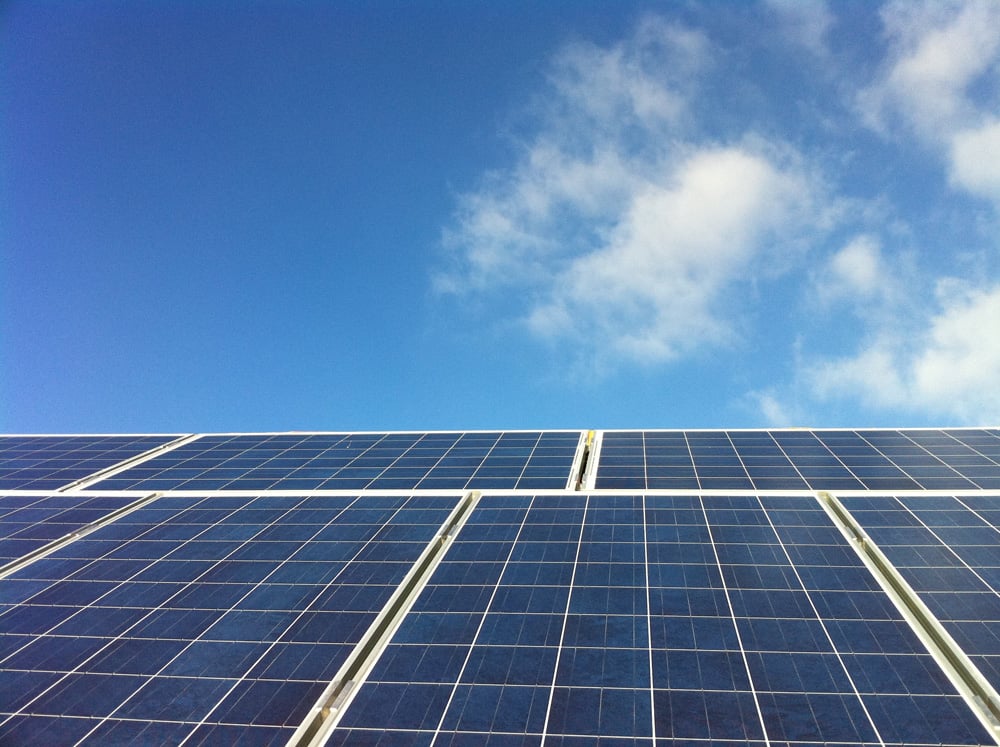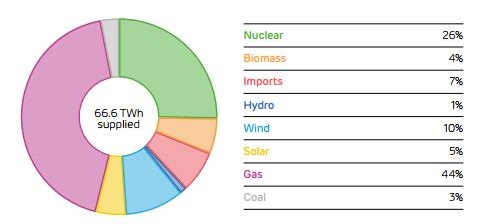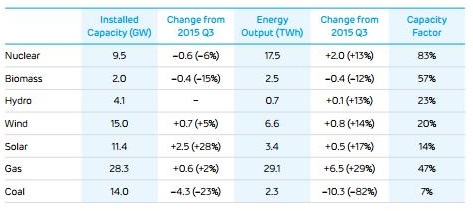
Low carbon energy sources were responsible for producing more than half of Britain’s electricity for the first time in Q3 2016, according to a new quarterly report commissioned by Drax Group.
It also found that coal generation dropped to its lowest point, supplying less energy to the country’s mix than solar and almost all other renewable technologies.
The first edition of the Electric Insights Quarterly report, which uses data from National Grid and the balancing market regulator Elexon, found that the share of nuclear, biomass, hydro, wind, solar and French imports peaked at 50.2%.
These findings for the July to September period show the milestone was reached following what the report calls “the dramatic rise of renewable energy”, with wind, solar and biomass supplying 20% during these months.

Britain’s electricity supply mix in Q3 2016. Image: Drax.
When combined with the government’s push towards gas, this has all but pushed coal off the system. The report states that just 3% of Britain’s electricity came from the fossil fuel, down from 38% four years ago and a figure that Drax has described as “a symbolic moment in the transition towards clean energy”.
This was buoyed by the fact that the country ran without any coal generation for almost six days over Q3, with the report adding that 5 May was the first day since 1881 that such an instance occurred in Britain.
These findings in Q3 follow the first of many historic moments for generation in the Britain back in April when more electricity was generated from solar in a full day compared to coal for the first time. This was followed by the first full month of solar outstretching coal generation in May.
While the presence of solar in Britain’s electricity supply mix has grown substantially in recent years, these ‘symbolic’ moments have been aided by the UK’s shift away from coal use, culminating in the government’s planned phase out of the fuel in 2025.

Installed capacity and electricity produced by each technology. Image: Drax
The growth of renewables and simultaneous reduction in the use of coal has seen per-unit carbon emissions from electricity consumption are at their lowest ever. Each unit of electricity now contains less than half the carbon it did four years ago, falling to a low of 221kg of CO2/kWh.
Andy Koss, chief executive of Drax Power, said: “This report shows Britain’s energy system is changing dramatically and we are seeing real benefits. Cleaner energy has reached a record high, and carbon emissions from electricity hit a record low.
“But there is more to do to make Britain truly low carbon. Additional reliable, affordable, clean energy is needed on the system, along with a focus of getting the balance right. More intermittent renewables like wind and solar are crucial but they will require more flexible back up to provide homes and business with electricity on demand.”
The government’s recent launch of the smart power consultation suggests they are alive to this need, with the comprehensive document covering a wide range of measures the government is investigating in order to transition to a smarter, more flexible energy system.
